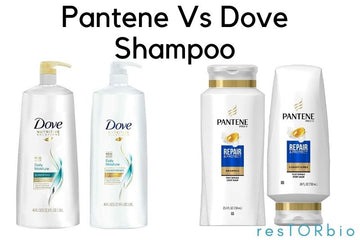
Are Bath and Body Works Wallflowers toxic? As someone who loves having a home that smells great, I've always been a fan of Bath and Body Works Wallflowers. But recently, I've heard some concerns about their safety and toxicity. So, I decided to do some research to find out if these concerns are valid.
Additionally, the environmental impact of these products is also a concern, as they can contribute to indoor air pollution and may not be biodegradable.
Despite these concerns, Wallflowers are still widely used and sold in stores. So, what safety standards and regulations are in place to ensure their safety? And are there any alternatives to Wallflowers that are safer and more environmentally friendly?

Check the list of products here
In this article, I'll explore these questions and more, so that you can make an informed decision about whether or not to use Bath and Body Works Wallflowers in your home.
Key Takeaways
- Bath and Body Works Wallflowers contain a complex mixture of chemicals that may have health and environmental implications.
- Some of these chemicals have been linked to health problems such as headaches, dizziness, and respiratory issues
- Safety standards and regulations for Wallflowers are in place, but concerns about their safety and toxicity remain.
- There are alternatives to Wallflowers that may be safer and more environmentally friendly.
- The are essential oil diffusers, beeswax candles and more
Composition of Wallflowers
Ingredients Breakdown
As a writer researching the safety of Bath and Body Works Wallflowers, I have looked into the composition of these products. According to the Bath and Body Works website, Wallflowers contain fragrance oils, glycolized alcohol, and water.
The fragrance oils are a blend of natural and synthetic ingredients that create the scent. Meanwhile, glycolized alcohol is a clear, colorless liquid that is used as a solvent to dissolve the fragrance oils. Lastly, water is used to dilute the fragrance oils and glycolized alcohol.

Chemicals of Concern
There are some chemicals of concern that are found in Wallflowers. One of these is phthalates, which are used to help the fragrance oils blend with the glycolized alcohol.
Phthalates have been linked to numerous health problems, including hormone disruption and reproductive issues. However, the amount of phthalates used in Wallflowers is within the limits set by the International Fragrance Association.
Another chemical of concern is benzene, which is a known carcinogen. While benzene is not an ingredient in Wallflowers, it can be formed when the fragrance oils are heated, such as when the Wallflowers are plugged in. However, the amount of benzene that is released is considered to be very low and is within the limits set by regulatory agencies.
Health Implications
As I researched the potential health implications of using Bath and Body Works Wallflowers, I found that there are both short-term and long-term exposure risks to consider.
Short-Term Effects
When it comes to short-term effects, some people may experience allergy-like symptoms such as headaches, dizziness, and nausea. This is because some fragrances can be irritating to the respiratory system, especially for those with pre-existing conditions such as asthma or allergies.
It is important to note that these symptoms are not necessarily indicative of toxicity, but rather a reaction to the fragrance itself.
Long-Term Exposure Risks
Long-term exposure to certain chemicals found in fragrances, such as phthalates, has been linked to potential health risks such as hormone disruption and reproductive issues.
However, it is important to note that the levels of these chemicals found in Bath and Body Works Wallflowers are considered to be safe for consumer use by regulatory agencies such as the Environmental Protection Agency (EPA) and the Consumer Product Safety Commission (CPSC).

Environmental Impact
As with any product, the production and disposal of Bath and Body Works Wallflowers can have an environmental impact. The plastic housing of the Wallflowers is not biodegradable and can contribute to the accumulation of plastic waste in landfills and oceans.
Additionally, the manufacturing process of the Wallflowers requires energy and resources, which can result in greenhouse gas emissions and other environmental impacts.
However, it is important to note that Bath and Body Works has taken steps to reduce their environmental impact.

They have implemented a recycling program for their products, including Wallflowers, and encourage customers to recycle their used products. Additionally, Bath and Body Works has committed to using sustainable materials in their packaging and reducing their carbon footprint.
While the environmental impact of Bath and Body Works Wallflowers cannot be completely eliminated, the company's efforts to reduce their impact are a step in the right direction.
Consumers can also take steps to reduce their own impact by recycling their used Wallflowers and choosing products with sustainable packaging.
Safety Standards and Regulations
As a responsible company, Bath and Body Works adheres to all safety standards and regulations set forth by the United States Environmental Protection Agency (EPA) and the Consumer Product Safety Commission (CPSC).
The Wallflowers products are designed and manufactured to meet the safety standards and regulations set by these agencies. The ingredients used in the Wallflowers are carefully selected and tested to ensure that they are safe for use in homes.
In addition, Bath and Body Works conducts extensive testing on all of its products, including the Wallflowers, to ensure that they are safe for use.
This testing includes both in-house testing and third-party testing.

Furthermore, Bath and Body Works provides detailed information about the ingredients used in its products on its website and on the product packaging.
This information helps consumers make informed decisions about the products they use in their homes.
Alternatives to Wallflowers
If you're concerned about the potential toxicity of Bath and Body Works Wallflowers, there are several alternatives that you can consider. Here are a few options:
Essential Oil Diffusers
Essential oil diffusers are a great way to add fragrance to your home without the use of synthetic chemicals.
They work by releasing a mist of water and essential oils into the air, which can help to improve your mood and promote relaxation.
Plus, there are many different essential oil blends to choose from, so you can find one that suits your preferences.

Beeswax Candles
The Beeswax candles are a natural alternative to traditional candles, which often contain synthetic fragrances and other chemicals.
These candles are made from natural beeswax, which has a subtle honey scent. They also burn cleanly and last longer than many other types of candles.
Natural Air Fresheners
There are many natural air fresheners available that can help to eliminate odors and add fragrance to your home. Some popular options include:
- Baking soda: Sprinkle baking soda on carpets, upholstery, and other surfaces to absorb odors.
- Vinegar: Mix equal parts vinegar and water in a spray bottle and use it to freshen up your home.
- Citrus: Cut up citrus fruits and place them in a bowl to add a fresh scent to your home.
Are Bath and Body Works Wallflowers Good For Pregnant Women?
Bath and Body Works Wallflowers can be used during pregnancy, but it's essential to approach them cautiously. These plug-in air fresheners contain synthetic fragrances and chemicals that may cause sensitivity or discomfort for some pregnant women, especially if they are prone to nausea or headaches. Here's what to consider:
-
Sensitivity to Scents: Pregnancy can heighten your sense of smell, so strong fragrances might feel overwhelming. Opt for lighter, more natural scents if you choose to use them.
-
Ventilation: Ensure the room where the Wallflower is used is well-ventilated. This helps prevent the scent from becoming overpowering and reduces prolonged exposure to fragrance chemicals.
-
Ingredients: While the exact components of Wallflowers aren't disclosed in detail, some synthetic fragrance ingredients may cause irritation or allergic reactions. If you're concerned, consider alternatives made with natural essential oils.
-
Personal Comfort: Every pregnancy is different, and what feels fine for one person may not suit another. If you notice dizziness, headaches, or nausea, it's best to discontinue use.
If you're unsure about using Wallflowers during pregnancy, consult your healthcare provider for advice. Natural alternatives, like diffusers with pregnancy-safe essential oils, can be a gentler option.
Frequently Asked Questions
What ingredients are in Bath and Body Works Wallflowers that may be harmful?
Bath and Body Works Wallflowers contain a variety of ingredients, including synthetic fragrances, essential oils, and other chemicals. Some of these ingredients, such as phthalates, can be harmful to human health.
Phthalates are endocrine disruptors. Some studies show that they can cause reproductive and developmental problems. Additionally, some of the chemicals in Wallflowers may be irritants or allergens for some people.
Can Bath and Body Works Wallflowers cause allergic reactions or health issues?
Yes, Bath and Body Works Wallflowers can cause allergic reactions or health issues in some people. Some of the ingredients in Wallflowers, such as synthetic fragrances and essential oils, can be irritants or allergens for some individuals.
Additionally, some people may be more sensitive to the chemicals in Wallflowers and may experience headaches, dizziness, or other symptoms when exposed to them.

Is it safe to use Bath and Body Works Wallflowers around pets?
While there is no definitive answer to this question, it's for the best that you avoid using Wallflowers around pets.
Some of the chemicals in Wallflowers may be harmful to pets. This is especially you expose them to these chemicals over a long period of time. Additionally, some pets may be more sensitive to the fragrances in Wallflowers and may experience respiratory or other health problems as a result.
How do Bath and Body Works Wallflowers affect indoor air quality?
Bath and Body Works Wallflowers can affect indoor air quality by releasing chemicals into the air. Some of these chemicals, such as phthalates, can be harmful to human health. Additionally, Wallflowers can contribute to indoor air pollution, which can aggravate respiratory problems and other health issues.
What precautions should you take when using Bath and Body Works Wallflowers in a household with babies?
If you have a baby in your household, it is better that you take extra precautions when using Bath and Body Works Wallflowers.
Keep Wallflowers out of reach of children and pets, and avoid using them in small, enclosed spaces. Additionally, consider using natural alternatives to Wallflowers, such as essential oils or beeswax candles.

Are there any safe alternatives to Bath and Body Works Wallflowers for home fragrance?
Yes, there are many safe alternatives to Bath and Body Works Wallflowers for home fragrance.
Some popular alternatives include essential oils, beeswax candles, and natural air fresheners.
These alternatives are generally safer and more environmentally friendly than Wallflowers. Plus, they can be just as effective at freshening up your home.
Related Posts:
Is Bath and Body Works Soap Antibacterial?
Does Bath And Body Works Drug Test
Is Bath And Body Works Cruelty Free?
Are Bath And Body Works Candles Toxic?
Is Bath And Body Works Bad For You?








